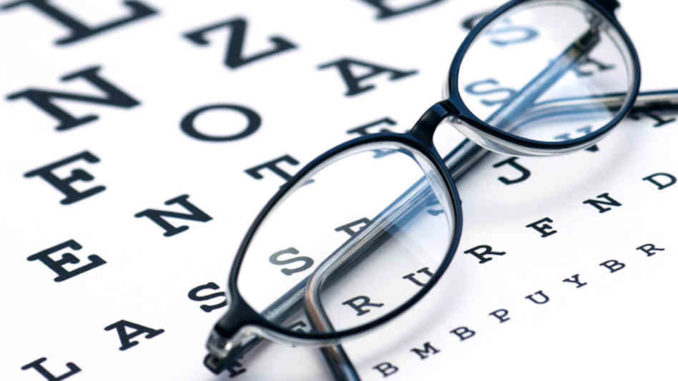
Reading an Eye Chart at the Eye Doctor
Everyone knows what it is like when asked to read the first few lines of an eye chart at the eye doctor. Nervousness sets in. Your eyes start playing tricks on you. “It that an O or a G??” So you guess. But then the eye doctor gives you your prescription. Then you start to wonder in the back of your mind, “Since I guessed on a few of these, am I going to get the WRONG prescription?? Well rest assured with technology today, an Optometrist can get fairly close to your prescription without even using the eye test.
So we wanted to demystify the dreaded eye chart at the eye doctor. And like most things, there is some logic to how they are structured and their overall purpose. The eye chart is used during an eye exam to measure visual acuity. This means that it checks how well you see in comparison to other people. Your eye doctor has you look at the eye chart and politely asks you to read the smallest line of text that you can see from 20 feet away. If you see clearly at 20 feet, which is what most people see at that distance, they call it 20/20 vision.
In the United States legal blindness is defined as your best-corrected vision, even when wearing glasses or contact lenses, is only 20/200. 20/200 vision means you have to get within 20 feet of the eye chart to read the line that people with normal vision can see from 200 feet away. To learn more about an eye exam, we have some great articles listed here.
 Types of Eye Charts at the Eye Doctor
Types of Eye Charts at the Eye Doctor
We have seen eye charts that range from a basic set of letters to road signs. What is important is the size of the letters, how far back you stand and how clearly you can read each part of the test. However, most Optometrists will use the following 4 types of signs:
1. Snellen Eye Chart
The original eye chart designed in the 1860’s by the Dutch eye doctor Hermann Snellen. The first line on this chart is a giant letter E. You read the chart from top to bottom, left to right covering one eye at a time.
2. Tumbling E Eye Chart
This type of eye chart is used for children that are too small to read or adults with reading or speaking difficulties. The patient is asked to lift their hand up, down, to the left or right depending on the image orientation of the letter E they see on the chart.
3. Landolt C Chart
Edmund Landolt, a Swiss ophthalmologist, created this visual acuity chart. This eye chart, which is similar to the Tumbling E chart, uses a Landolt broken ring symbol in various orientations. The Landolt C chart is a way to check vision for illiterate or mute patients.
4. ETDRS Chart
The Early Treatment Diabetic Retinopathy Study helped develop standardization for both visual acuity testing and eye chart design. The ETDRS is accepted by The National Eye Institute and the Food and Drug Administration as the mandated standard for clinical eye test trials worldwide.
While the above tells you a little about each type, they all accomplish the same thing. Are you interested in downloading an eye chart for use at home? This is an actual eye chart used by eye doctors all over the country. And this follows the Snellen method as described above. Maybe you can be an aspiring Optometrist!

Leave a Reply